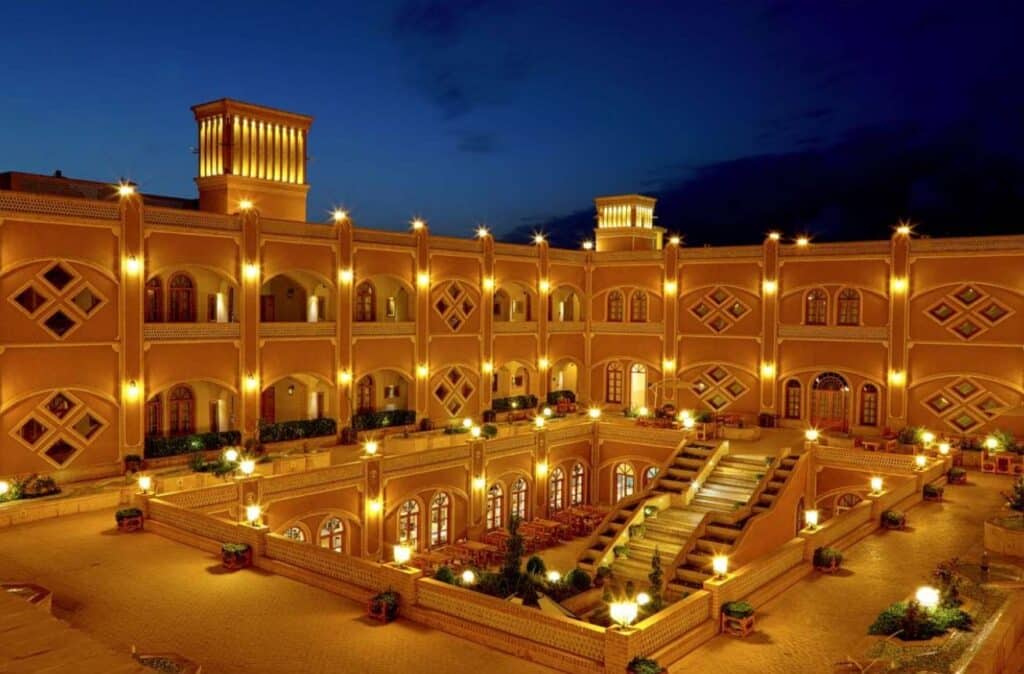
Yazd, a world-renowned desert city, is not just about its starry desert and beauty; it’s also rich in historical, cultural, and scenic spots. Each year, it attracts numerous domestic and international tourists. In this article from the SURFIRAN tourism magazine, we’ll explore one such destination in Yazd, the Dowlat Abad Garden, located in the Chahar Menar neighborhood on Shahid Rajaei Street.
Historically, Dowlat Abad Garden was the residence of a ruler of Yazd and his family. It also served as a site for governmental affairs, making it one of the most beautiful historical and government buildings in Yazd. Today, this unique and stunning garden welcomes tourists from all around the world, opening its doors to both Iranian and international visitors.
Dowlat Abad Garden in Yazd, Iran, was registered as a national heritage site (number 774) on March 14, 1968. Recognized as one of UNESCO’s nine Persian Gardens, it was also listed as a World Heritage Site in 2011.
Dowlat Abad Garden in Yazd, recognized as one of the nine Persian Gardens in UNESCO‘s World Heritage, was registered as a national heritage site of Iran under number 774 on March 14, 1968. It also made it to the list of World Heritage Sites in 2011.
Contents
Dowlat Abad Garden: From Past to Present
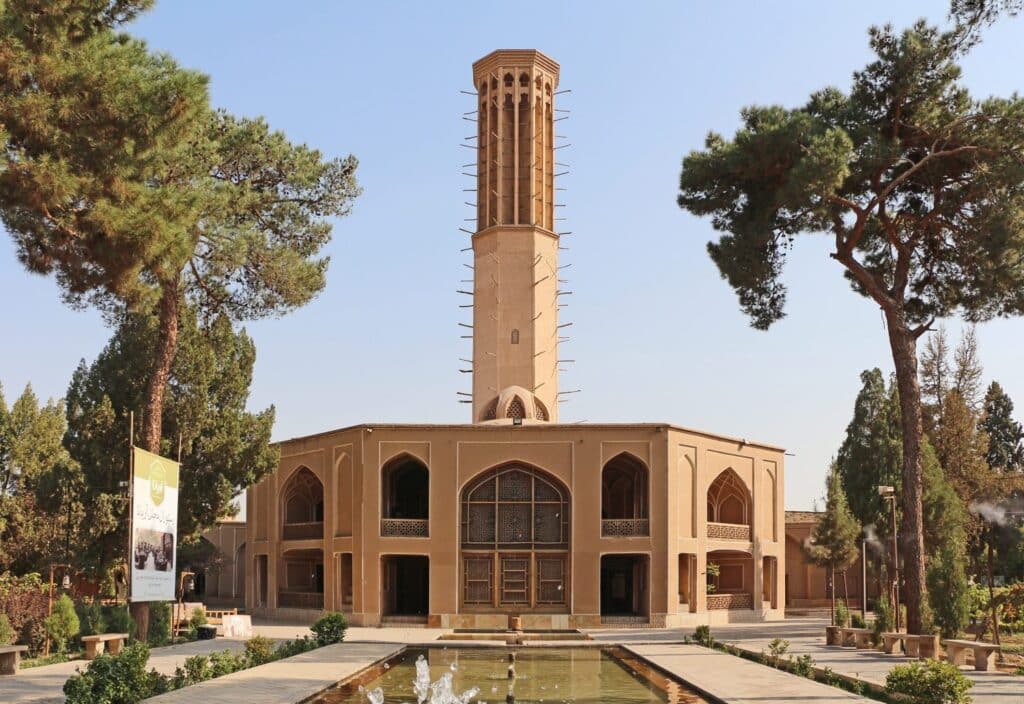
Dowlat Abad Garden in Yazd is considered one of the oldest Persian Gardens. Every corner of it resembles a piece of paradise. The garden, with its global fame, delights its visitors.
Also known as the garden of “Chahar Menar,” this old garden of Yazd was constructed around 1780 by Mohammad Taghi Khan Bafghi, known as Khan-e Bozorg. The garden, approximately 260 years old, was once the residence of the contemporary rulers, co-existing with Shahrokh Mirza and Karim Khan Zand.
The estate and garden, initially meant for the descendants of Mohammad Taghi Khan, the head of the Rahimi family, were later taken over by the cultural heritage organization. Today, Mohammad Ali Moaz al-Dini, son-in-law of the representative of the Supreme Leader, manages it.
The Historic Mansion Amidst the Garden
The Dowlat Abad Garden complex dates back to the Afshari and Zandiyeh eras. It includes various sections like the Sar Dar mansion, Hashti building and windcatcher, Behesht Ayin and Mirror Hall, Tehran mansion, the two-mouthed water storage, and Naser garden.
Tall and lush trees like grapevines, pine, cypress, pomegranate, and cherry are found throughout this magnificent garden, creating a beautiful and lively view for tourists. Spring brings a gentle breeze, spreading the fragrance of Mohammadi and red flowers, making the garden’s atmosphere peaceful and dreamlike.
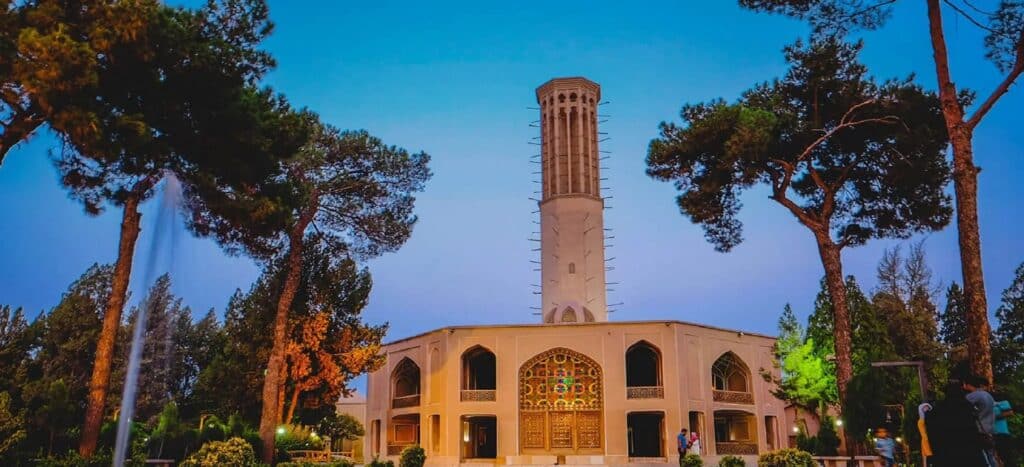
Why Was Dowlat Abad Garden Built?
During the Zand Dynasty, coexisting with the rule of Karim Khan Zand, Mohammad Taghi Khan, the head of the Khans of Yazd, decided to construct a qanat (an ancient water supply system). This qanat, stretching 65 kilometers from Mehriz to Yazd, was named Dowlat Abad.
Originating from the Mehriz heights, the qanat brought life and prosperity to the region. Along its path, it irrigated numerous agricultural lands and powered several water mills. Following the qanat’s construction and its contribution to the area’s vitality, Khan-e Bozorg established the Dowlat Abad Garden.
Evolution Over Time
Back then, the Chahar Menar Garden was outside Yazd’s city limits, surrounded by tall trees, making it invisible from the outside. Over time, as Yazd expanded, this garden became central to the city.
The Mud-Brick Structures
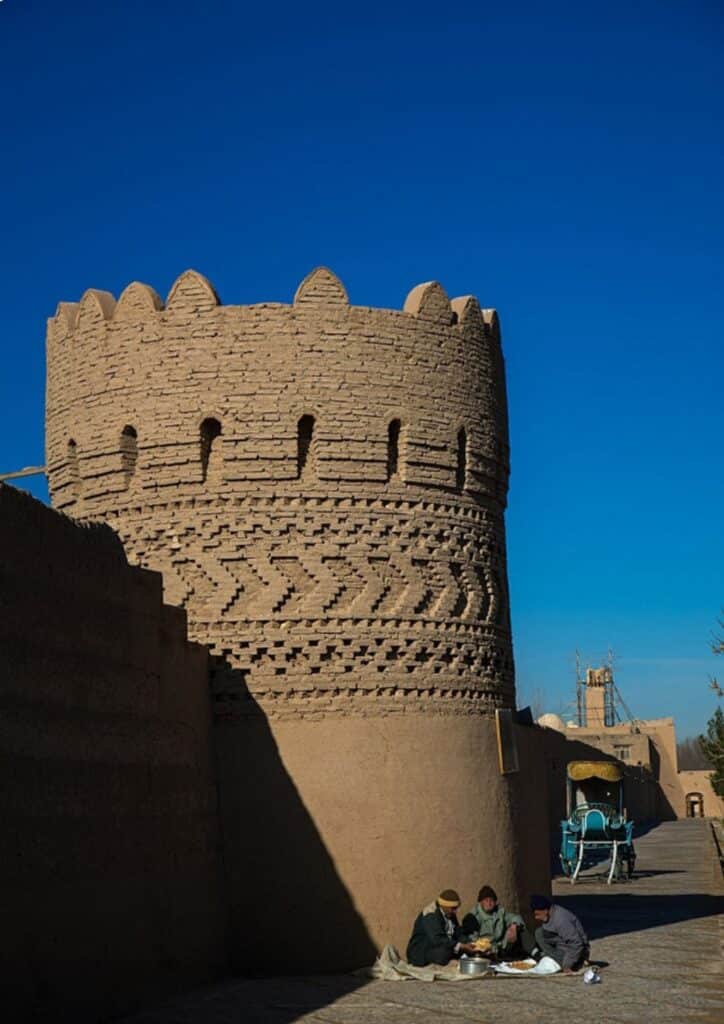
Dowlat Abad Garden encapsulates one of the most authentic designs of Persian gardens. The garden is situated at the center, with buildings constructed around it, a typical feature of Persian gardens.
The garden boasts four main structures, including the Hashti, Tanbi Hall, and the main entrance. It also houses several winter rooms.
This garden consists of two rectangular sections, the Andaruni (inner section) and the Biruni (outer section), perpendicular to each other. One of the most prominent architectural features is its tall windcatcher, standing over 33.8 meters high, the tallest in the world. The blend of wind and water in this part of the structure cools the Shah Neshin (royal sitting area) and the halls.
Over the years, Dowlat Abad Garden has served various purposes, including a governmental residence. The outer garden was used for state ceremonies, sports events, and city administration, while the inner garden served as a private residence.
Qanats and Water Supply System
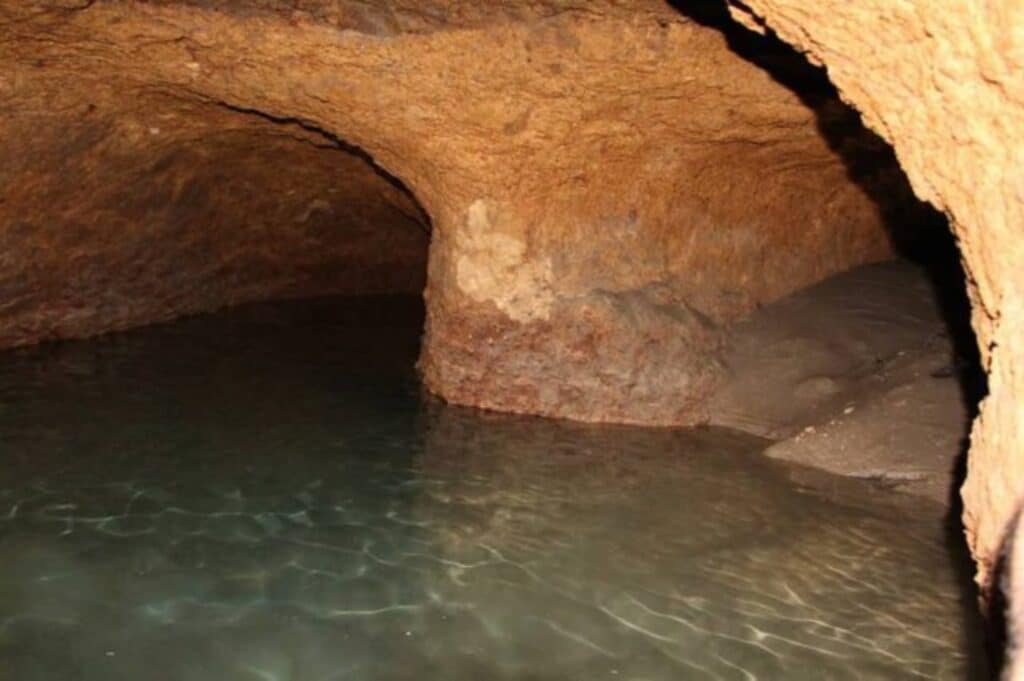
Water is the main element of Dowlat Abad. The display of water in the fountains and pools adds a special beauty. The Dowlat Abad Qanat provides water for the garden.
Additionally, there’s a 150-meter-deep well with a gavero (traditional water storage), located on the eastern side of the garden near the service building. This was used during droughts to prevent water scarcity and keep the pools full. An ab anbar (water reservoir) is also present for use when necessary.
Yazd Attractions: The Fountain of Dowlat Abad Garden
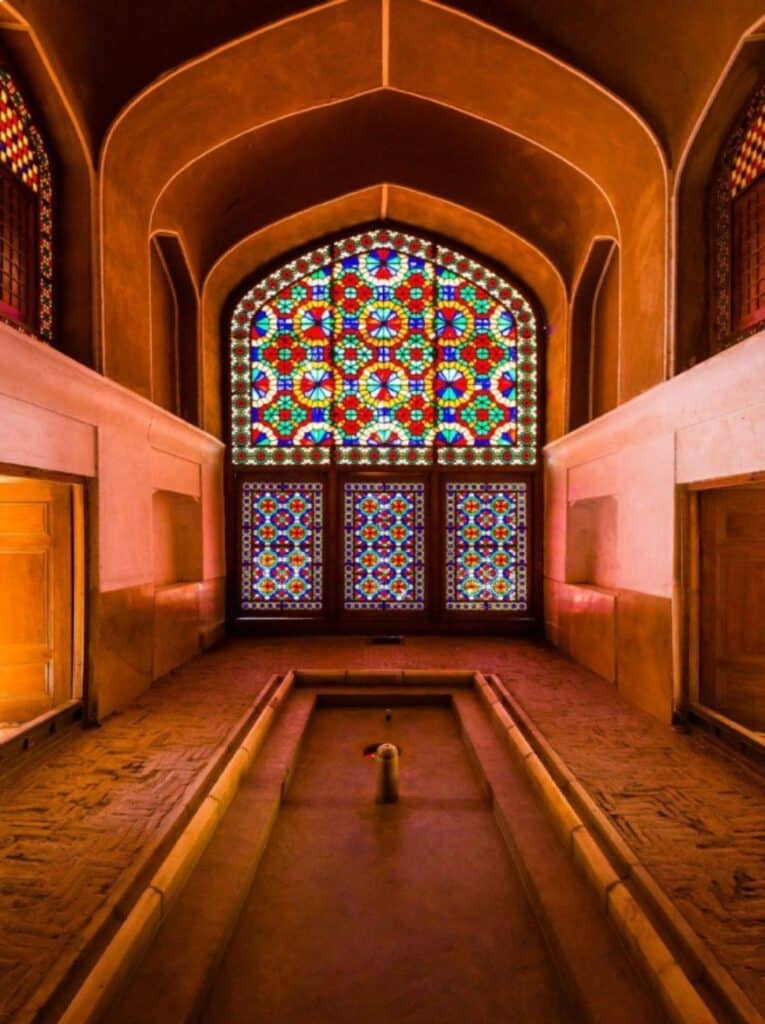
The garden’s design ensures the constant presence of water, enhancing its beauty. Water springs from beneath the windcatcher in the Hashti mansion, flowing into a central marble pool.
There are three marble fountains in front of the stained-glass windows of the rooms. The design and carving of these stones create waves, making the water volume appear larger than it is.
From each of these fountains, water flows into a small pool, known as “koolgi.” The water from these pools then streams into the garden’s large fountain. This main fountain is aligned with the garden’s central axis, proportionate to the height of the windcatcher of the Hashti mansion, perfectly reflecting the image of the garden’s mansion in the water.
Water Routes and Pools
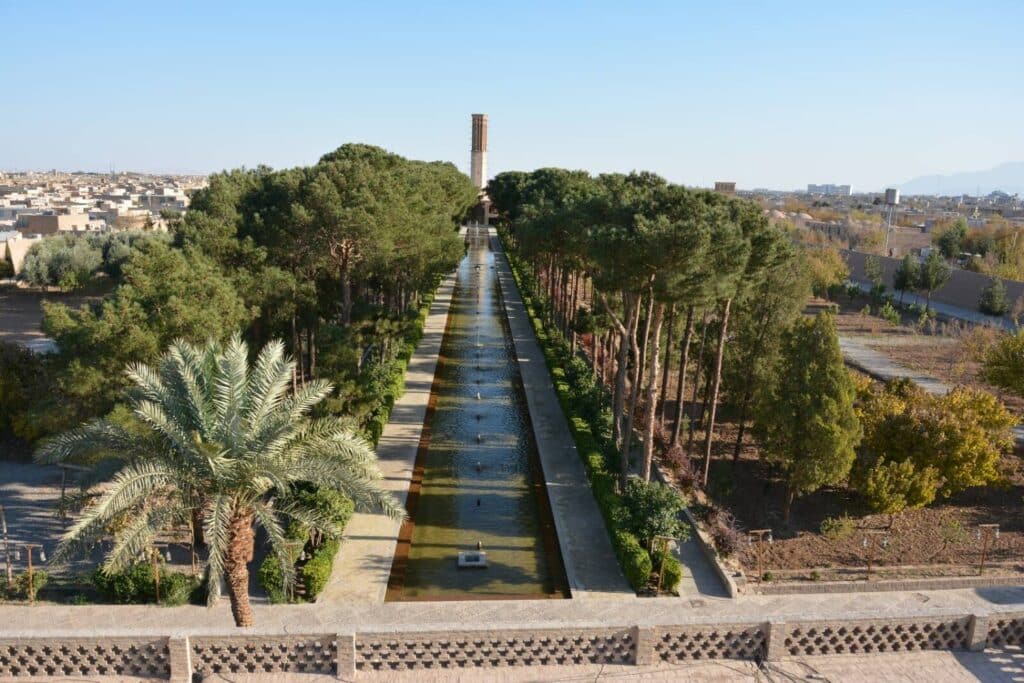
Water from the main entrance building flows into the Behesht Ayin Garden, then pours into a large dodecagonal pool situated in the north of the building. It then streams into three rectangular pools on the other three sides.
This water system, which spreads through streets and settlements for agricultural purposes, was designed not only to irrigate the trees but also to enrich the soul of the desert inhabitants with the sight of clear water on the land.
Windcatchers of Dowlat Abad Garden
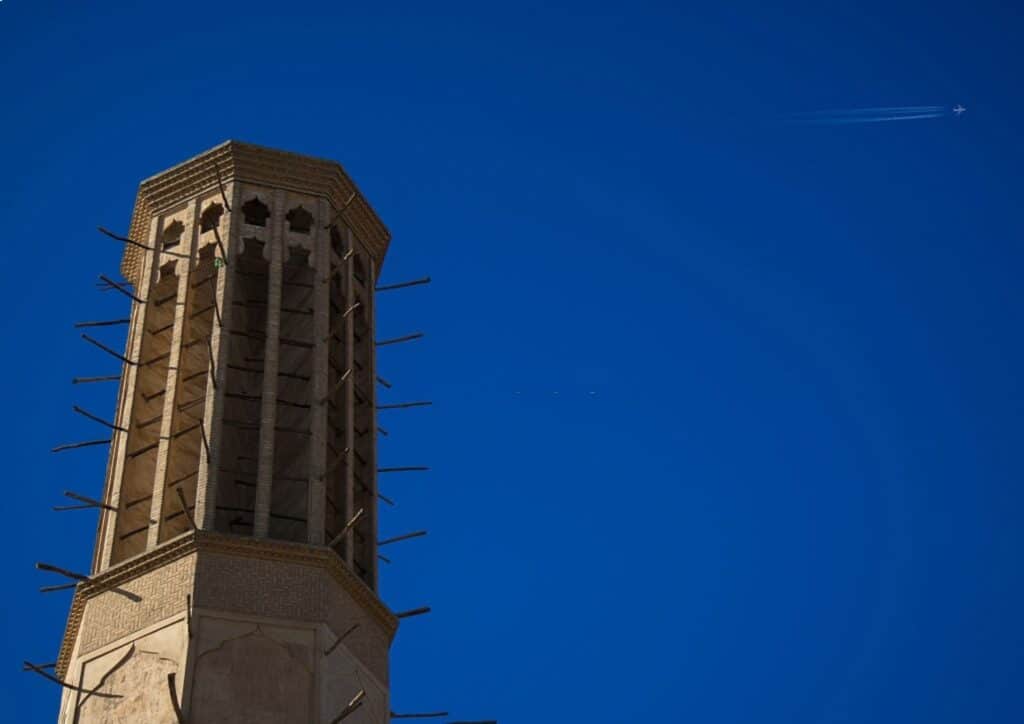
The windcatcher of Dowlat Abad Garden stands out as a unique feature. At 33.8 meters, it’s the tallest in the world. Unlike others, this windcatcher has a rectangular shape with an octagonal appearance, allowing wind from any direction to easily enter and be directed downwards.
A water pool at the base of the windcatcher is a testament to architectural ingenuity. The hot desert wind enters the windcatcher, loses some of its heat passing through the wooden blades, and cools further as it blows over the pool’s surface. This design ingeniously creates a natural cooling system without the need for external energy.
Residents used the halls, royal sitting areas, and rooms connected to the windcatcher during summer, designating this structure as a summerhouse.
The Beautiful Dome and Various Structures
Dowlat Abad Garden comprises several distinct sections, each offering a unique attraction. Let’s explore these features.
The Inner Section of the Garden
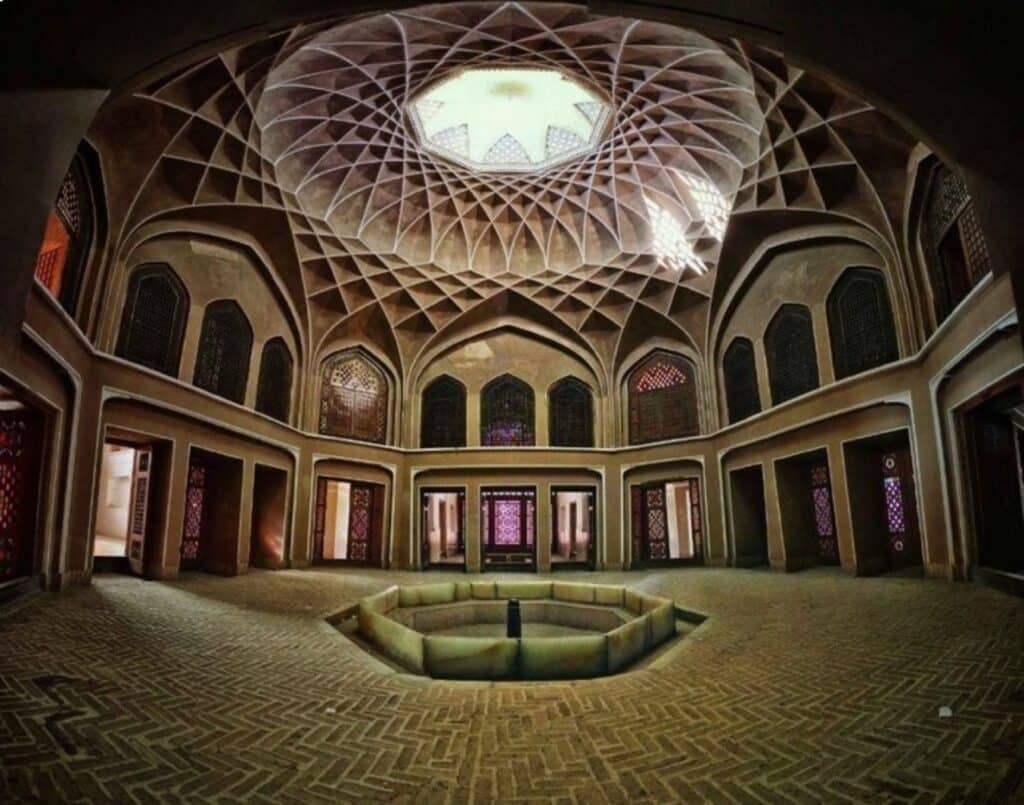
This rectangular area was historically known as the private garden and residence. Symmetry is evident in various elements on both sides of this section. The central fountain adds to the garden’s architectural precision, making it a standout feature.
The ruler and his family lived in this inner section. It includes the Hashti buildings, Behesht Ayin with its beautiful stone pavements and large pools, the harem, kitchen, servant quarters, stable, camel house, prisoner rooms, carriage house, watchtower, and a private water reservoir on the garden’s west side.
In gardens serving as both residences and government buildings, the inner section was distinct from other areas and even had its own gatekeeper for supervision.
Behesht Ayin
Behesht Ayin is a sun-facing winter residence, directly opposite the Hashti. It also marks the boundary between the outer and inner sections of the garden. The area between the Hashti building and Behesht Ayin is planted with clover, flanked by cherry and pomegranate trees on both sides.
Hashti Building (Summer Windcatcher)
The Hashti building, located at the end of the main axis of Garden and connected to the southern wall, is one of the garden’s most significant structures. It serves as the main cooling facility, transferring cool air from the windcatcher to the royal sitting area and halls.
The Beauty of the Inner Section and Hashti Building
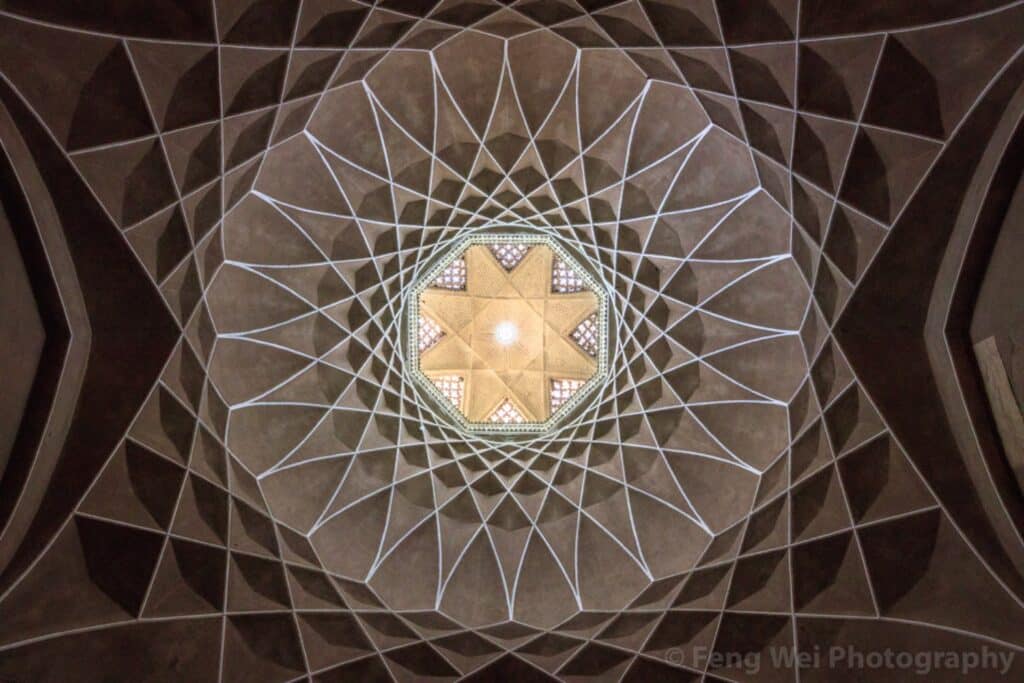
This two-story building includes a royal sitting area with latticed doors and a marble pool, a small windcatcher chamber, the Hashti itself, and two hidden rooms. Its roof, a masterpiece of architectural art, is made of sand, clay, straw, and plaster like other buildings in Yazd. The use of colorful stained glass in its Orosi doors adds decorative elegance. The upper floor features a hall and a porch, enhancing the building’s beauty.
Kitchen Turned Traditional Cafe
Previously serving as the kitchen, this area has been transformed into an eye-catching and pleasant traditional cafe. Visitors can enjoy light meals or beverages in this delightful setting during their tour of the garden.
Tanbi Hall
The Tanbi Hall, a large structure located west of the windcatcher or Hashti, features a square-shaped windcatcher above it. This hall served as a summer residence, with chambers, verandas, and halls on one floor, all connected to the Tanbi Hall. It also houses a basement accessible from the south through a corridor leading under the windcatcher and connecting to the garden via two staircases.
Watchtower
A tall mud-brick wall encircles the garden, featuring a tower once used for surveillance.
The Outer Section of the Garden
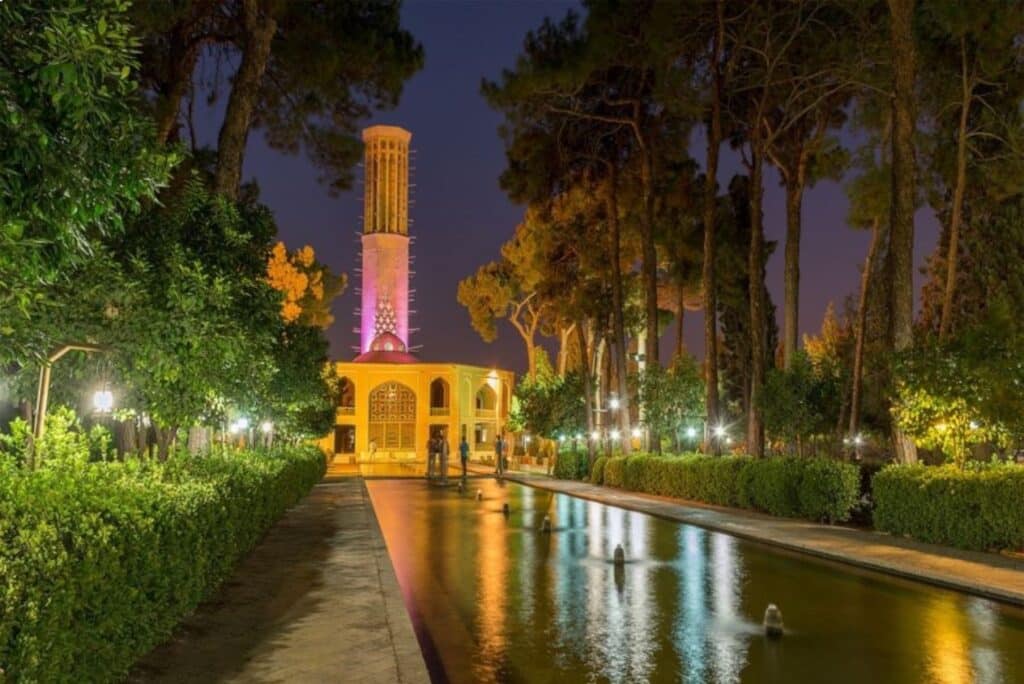
Dowlat Abad Garden is stunning by day, but at night, it offers a different vista with shining lanterns illuminating the pathways among the trees, creating a beautiful ambiance. The entrance door of one of the garden’s rooms is adorned with colorful stained glass, casting attractive colored lights in the sunlight. The intricately carved wooden lattice doors, colorful glass windows, fountains inside the main building, and century-old mulberry trees welcome tourists during the day.
Jolokhan and Main Entrance
The Jolokhan or outer section of the garden was historically used for caravan accommodations, sports ceremonies, state functions, and administrative purposes. It comprises the three-story Mirror Hall, Tehran Mansion, main entrance building, Naser Garden, two bazaars, two watchtowers, a public water reservoir, and the Divankhaneh on the garden’s eastern side.
Visiting Hour
Dowlat Abad Garden is open to visitors every day from 7:00 AM to 10:30 PM. It’s an ideal place to spend a pleasant evening with family and friends, enjoying the delightful atmosphere.
Location
To visit Dowlat Abad Garden, travel to the welcoming city of Yazd. Once there, inquire about the Pamnar neighborhood for guidance. The garden is located at:
Address: Yazd, Shahid Rajaei Street, Hosseiniye Alley, Dowlat Abad Garden
Conclusion
This article aims to mentally construct the space of Dowlat Abad Garden for those who haven’t seen it in person, inspiring them to visit this magnificent garden on their trip to Yazd.
